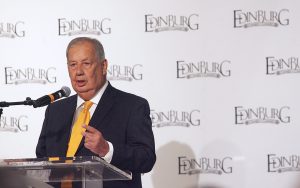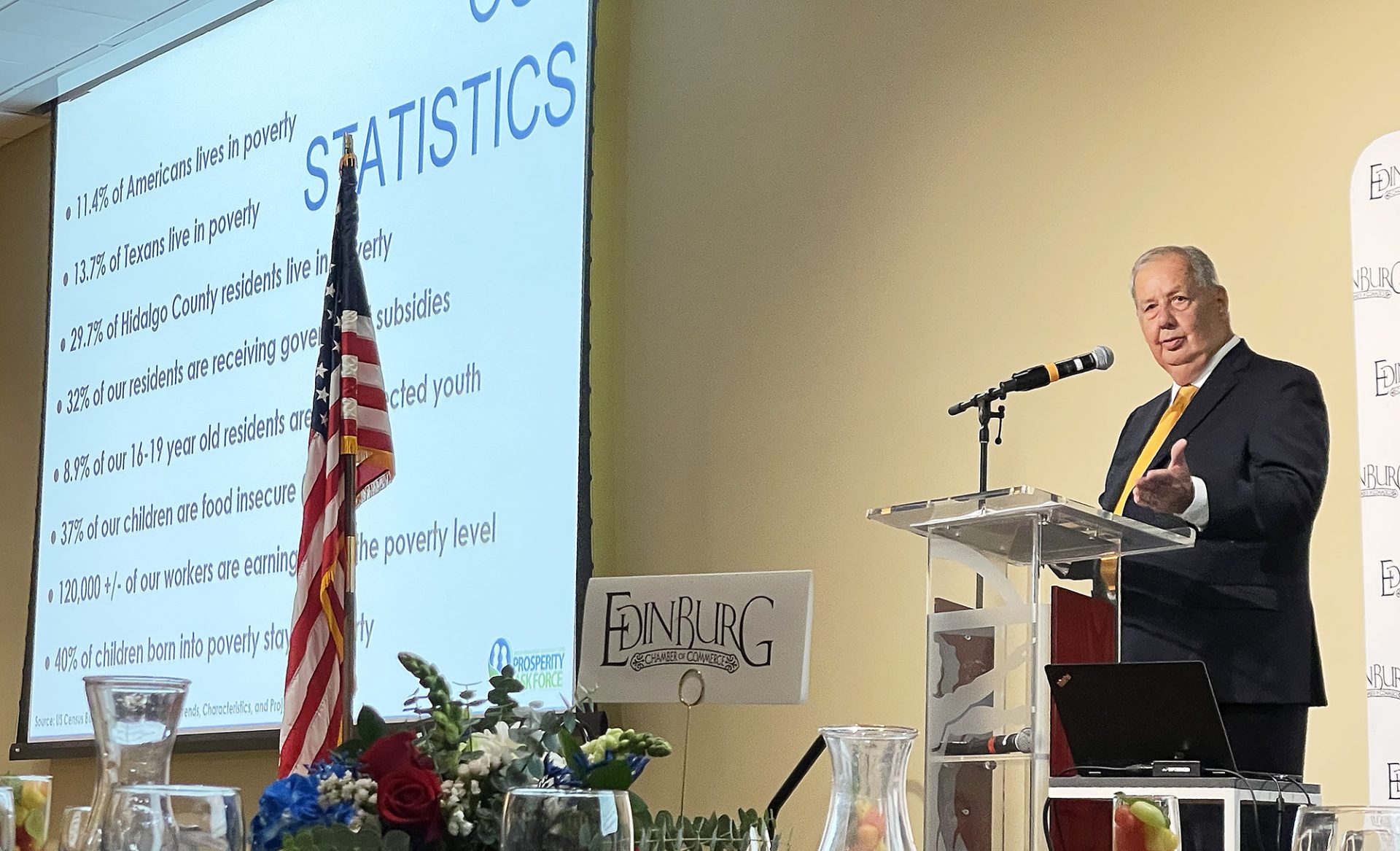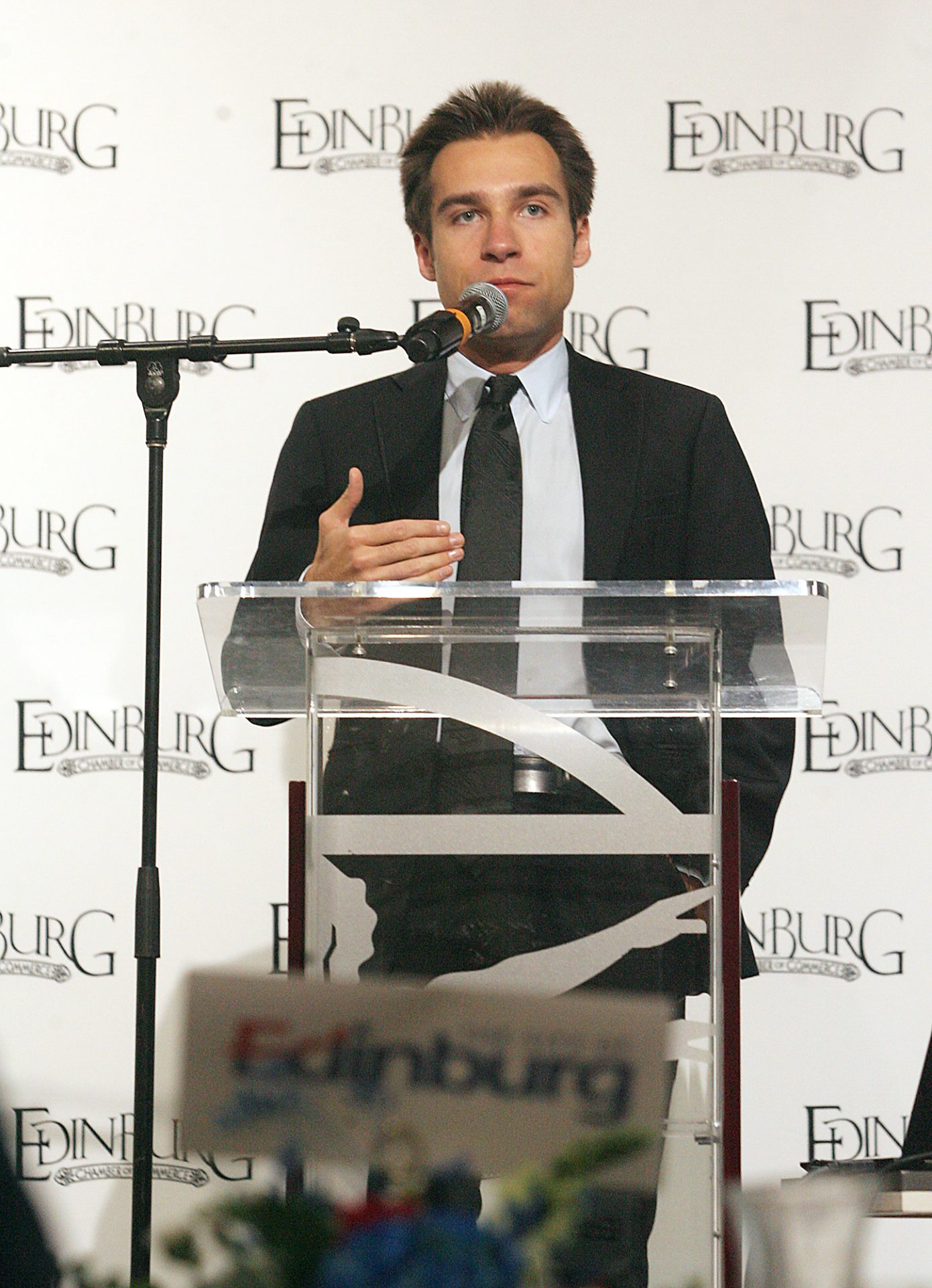|
Only have a minute? Listen instead
Getting your Trinity Audio player ready...
|

EDINBURG — With a poverty rate three times higher than the national average, it is imperative upon leaders in the Rio Grande Valley to do something to change a trend that has persisted for the last five decades.
That’s why, last year, Hidalgo County Judge Richard F. Cortez founded what he calls the “prosperity task force.”
It’s an initiative that aims to bring together leaders in industry, education, economic development and social services with residents who are seeking to better their lives.
And it’s why — during a breakfast hosted by the Edinburg Chamber of Commerce on Thursday — Cortez issued a call to action while outlining how the task force hopes to put methodology into practice.
“We want to have a system of transferring the people in poverty and put them in a good job. And for us to do that, we have to have a system that will create that pipeline,” Cortez said to an audience of local titans of industry who had gathered to hear the county judge’s “prosperity outlook.”
Cortez explained that, nationally, about 11.4% of Americans are living in poverty. In Texas, that number is almost 14%.
But in the Valley, nearly a third of the population lives in poverty.
“In Hidalgo County, it’s 29.7%. Three times the national average,” Cortez said.
The numbers are equally troubling when looking at how many people use social services — 32% of Hidalgo County residents receive a government subsidy, while 37% are food insecure.
The county judge said he fears those statistics are under counts, especially when local school officials have told him that nearly four out of five school age children qualify for free or reduced lunch.

Poverty is daunting, and so is trying to mitigate it, Cortez said.
“It’s such a complex issue that if we were to put that task on the backs of a group, just one group, I think we’re going to fail because it’s just too much,” Cortez said.
But that’s where the prosperity task force comes in. The task force aims to break the solution into different categories where different groups of people can focus their efforts.
The ultimate goal of each category is to guide residents from merely wanting to improve their socioeconomic status to realizing a real-world improvement through education, mentorship and job placement.
It’s what Cortez referred to as creating “human capital.”
During the Chamber breakfast, one of the task force’s newest hires, former educator and Texas Board of Education candidate Thomas Ray Garcia, explained how it will work.
“We need the organizational structure to work together and to be able to connect across differences, across sectors, to make the real difference we need to make in our county,” Garcia said.

The task force is divided into four broad categories that are, themselves, further subdivided into 14 specific focus areas.
The “data and policy” category will allow the task force to learn where the needs are by consulting with business and government leaders.
“So we don’t design a system designed to get people out of poverty without looking at the facts first,” Garcia said.
The second category, which Garcia referred to as “the engine of the operation,” involves mentorship — pairing residents with educational and career counselors.
The third category, financial, is perhaps the most crucial to the prosperity task force.
It involves finding funding streams to help residents as they go through the prosperity task force process to aid them in pursuing educational or vocational training, housing, food security and even transportation.
And the final category, the “jobs and credentials” category, involves creating a job market to meet residents as they complete their journey through the task force.

For Judge Cortez, it’s this last category that is perhaps the most consequential.
It does nothing for the county’s goal of decreasing poverty if, after investing in residents, they have no place to work.
“Every time we lose human capital that leaves this area, two bad things happen: we don’t benefit from it, and we’re gonna have to compete with it ‘cause it’s somewhere else,” Cortez said.
For Garcia, who — as a child of a single parent, and who was once told by a school counselor that college was not a place for him — bucked the statistical odds against him, the task force is about helping others break barriers, too.
“What we try to do through the prosperity task force is to start closing these gaps by working together,” Garcia said.
“By making sure people have adequate housing, adequate food access, adequate healthcare services, transportation to that job — we’re not just filling in a gap anymore, we’re bringing together people from across different sectors to learn from one another,” he said.
Both Garcia and Cortez urged members of the community — no matter their industry — to become a part of the task force by volunteering to become a mentor.








